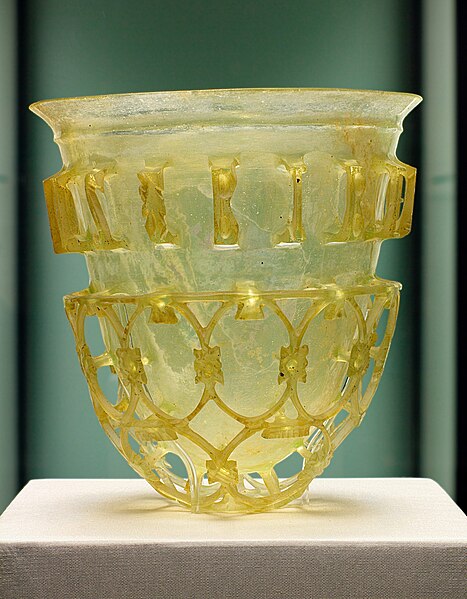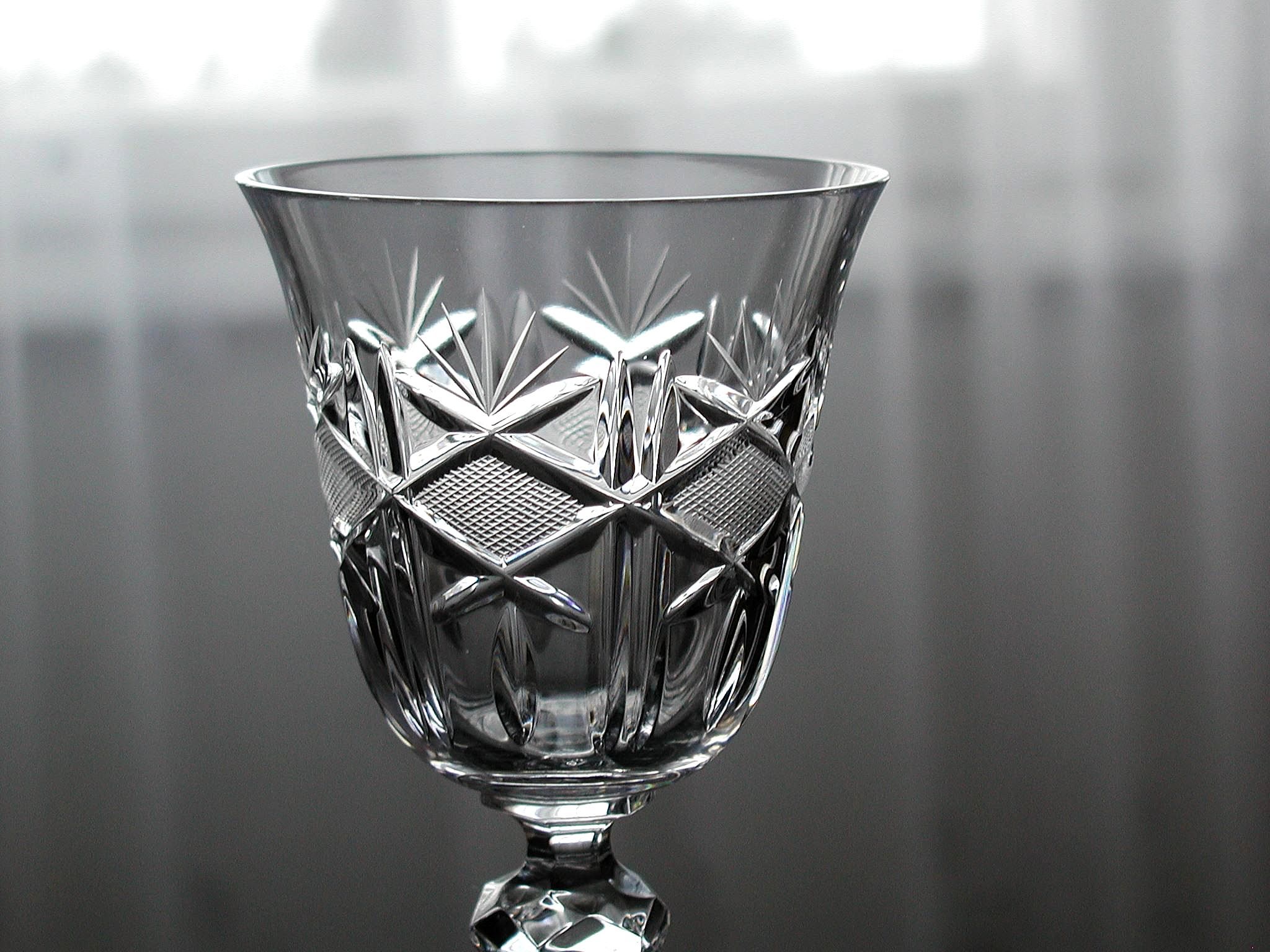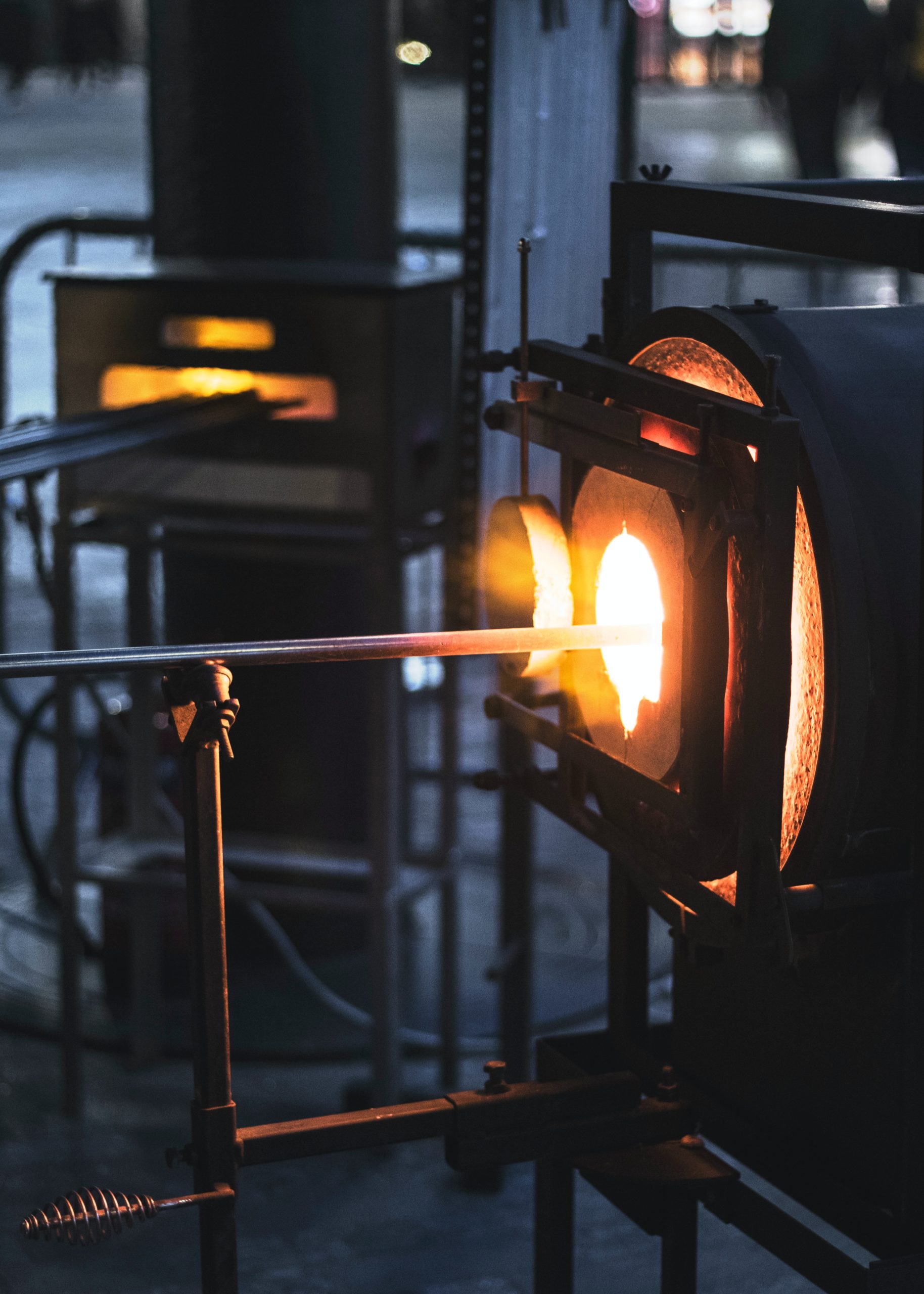The earliest records of glass blowing can be found in Egypt and Syria from 2450 BC. This craft was then picked up by other regions in Africa and Europe. It finally reached North America and the rest of the world. Glass blowing was an important step in the history of crafting because it allowed for the creation of objects that were both strong and fragile.
In modern-day factories, this process is used to create everything from drinking glasses to windshields. The art of glass blowing is now appreciated by people all over the world.

Mesopotamia
Mesopotamian cemetery excavations revealed the first inventions in glass by the human race. Glass beads were unearthed in the excavations that were the earliest creations of molten sand from 2450 B.C.
Syria
In as early as 1700 B.C., glass manufacturing was established.
A primary reason why the art of glass blowing originated in Egypt may have been because of the quality of sand available in that region. Some believe that it may have been the Phoenicians/Canaanites that invented glass blowing before the Egyptians.
1200 B.C., molds were used to cast hot glass over. Glass blowing as a technique was developed in Syria in 100 B.C.
Egyptians
Ancient Egyptians are also credited with the invention of innovative methods of making glass, such as the use of organic compounds such as natron(a mixture of sodium compounds), and soda from el-Barnugi on the Nile delta in Egypt. Egypt was under close Roman contact after its invasion by Alexander the Great in 536 B.C. Glass-making sites exported both glass and raw materials such as natron to the Roman artisans, factories, and towns.

Egyptians created glass vases in 1450 B.C. The technique used to make this vase was called sand armature – trails of melted glass are wrapped around a core/mold made out of the sand. Ancient Egyptian glass was traded all over the medieval world, as far as Scandinavia in Europe.
Addition of Natron to the glass-making process aided melting and reduced overall wastage. An account of these techniques with details of glass-making sites is described by Pliny the Elder, a Roman who lived in the 1st century A.D. He mentions natron sourced from two places specifically, the soda beds near Naukratis and ones at Memphis.

Phoenicians
Phoenicians were excellent traders and sailors. They traded all over the Mediterranean region and southern Europe. It may well have been these tradesmen who may have spread the demand for glass among the nobility and later on the common man in these continents.
As the Phoenicians improved their sailing and fighting capabilities as a race, they began to spread out northern Africa and set up colonies. Although they were later conquered by the Persians, glass blowing and manufacturing took up a big way in Phoenicians starting from 50 B.C.
Europe
In 100 B.C., glassmakers’ products from Asian and northern African artisans and factories arrived on Europe’s western shores namely Britain and France in 690 A.D. Towards the turn of 1000 A.D., glass manufacturing techniques arrived in Venice. Venice took over the manufacturing of glass in a big way. They further enhanced glass manufacturing techniques and developed this industry throughout the medieval ages.

Italian, Venice (Murano); Bowl; Glass
In 1291 A.D., the Venetian government moved all glass-making artists and factories to the island of Murano. This was to keep glass-making secrets and theft of artisans and techniques out of Venice.

In 1600 A.D, Henry IV promoted glass-making factories in France in a big way. He conferred rights to artisans to produce glass within France.
In 1615 A.D., coal furnaces replaced wood furnaces. George Ravenscroft developed the first lead crystal in 1673 A.D. which made indigenous production of glass possible in Britain.

Semiautomatic glass blowing process in 1887, in Yorkshire. This put glass production on an industrial scale with a capacity to produce 200 bottles in an hour.
Louis Tiffany produced stained class in 1890.
North America
In 1608 A.D, Jamestown became the British American colony to have a glass factory set up with wood furnaces for glass manufacturing. Deming Jarves introduced a pressing machine that was able to imitate cut glass at half its cost in the Sandwich Glass Company in Cape Cod in 1827. Quickly glass production and inventions in this field picked up in the American continent. Many notable entries are invention of a rudimentary version of the neon sign by Julius Plucker and Heinrich Geissler of the Geissler tubes in 1858; the Invention of the mason jar in 1858 in New York; Corning Glassworks made glass bulbs for Thomas Alva Edison in 1868.
In 1900, after the discovery of neon as an element in 1898, Michael Owens invented the fully automatic glass-blowing machine. Gob Feeder was invented in 1923.
Conclusion
The history of glassblowing is thought to date back to Syria in the first century AD. There, artisans developed a technique for shaping molten glass into intricate objects by blowing air through a tube. This ancient art form quickly spread throughout the Mediterranean region and eventually made its way to Europe. Glassblowing flourished during the Renaissance, as skilled craftsmen created beautiful works of art for royalty and the Church. Today, glassblowing is still practiced in many parts of the world, including modern-day factories. The ability to create such beautiful and delicate objects from nothing more than sand and fire continues to amaze us. Thanks to the skill of these talented artisans, we can enjoy the beauty of glass in our everyday lives.
